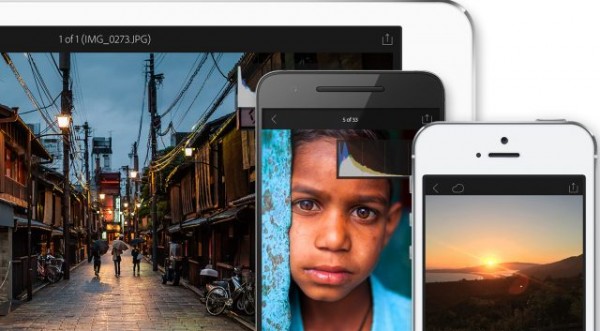Adobe bets on Chromebooks for education with slew of mobile apps

Until now there has been a clear division between Adobe’s mouse-and-keyboard driven desktop applications and its touch-centric mobile versions. But, timed to coincide with Google’s push to blend Android with Chromebooks, Adobe has announced support for six of its most popular mobile applications on Play Store-compatible Chromebooks. This is part of the company’s education initiative, so it’s fitting that it’s being rolled out at Europe’s Bett education technology conference.
Android apps moving to Chromebooks
The six applications Adobe has released for Chromebooks are Photoshop Mix, LightroomMobile, Illustrator Draw, Photoshop Sketch, Adobe Comp CC, and Creative Cloud Mobile. The case for creative applications for students is compelling, with Adobe citing figures that 78% of teenage students (and 88% of their teachers) see creativity as essential to their future careers.
Mobile creative apps are surprisingly popular
 For those of us who still spend most of our time in the world of desktop software, the idea of doing serious design or photo editing on a smartphone or even most tablets seems at best awkward. But for an increasing number of creative professionals, and especially students, mobile devices are the center of attention. One reason for that is the speed at which the creative process moves. Events need to get promoted as they occur, and social media never sleeps. So the ability to get the word out requires having a tool set handy at all times — which usually means having one on a mobile device. A second very important reason is that the smartphone has become by far the world’s most popular camera. So it is natural to want to process and publish images on their native platform, rather than use a second device and have the overhead of transferring the content.
For those of us who still spend most of our time in the world of desktop software, the idea of doing serious design or photo editing on a smartphone or even most tablets seems at best awkward. But for an increasing number of creative professionals, and especially students, mobile devices are the center of attention. One reason for that is the speed at which the creative process moves. Events need to get promoted as they occur, and social media never sleeps. So the ability to get the word out requires having a tool set handy at all times — which usually means having one on a mobile device. A second very important reason is that the smartphone has become by far the world’s most popular camera. So it is natural to want to process and publish images on their native platform, rather than use a second device and have the overhead of transferring the content.
Adobe realizes that mobile is a threat and an opportunity
The result is a large disruption in how the creative process works for many, and an opportunity for new vendors to try to break the near monopoly Adobe has had on design tools. Examples include the wildly-popular Snapseed (acquired by Google) and Instagram, along with many others. Adobe realized the potential threat early on, and has moved quickly to embrace mobile devices, with literally dozens of mobile applications now shipping. The flip side of the threat posed by mobile is the opportunity it gives Adobe to move beyond its hard core users, by providing creative tools to any of the billions of people who have a smartphone.
What happens when you have touch-based apps on a desktop-class device?
Until now, Chromebooks were firmly anchored in the desktop metaphor — albeit with some major limitations. Some have been touch-enabled, but many are not. Despite having a desktop model of interaction, because Chromebooks don’t support a traditional desktop OS, the only way to run most desktop software on a Chromebook has been as a service. Typically these services are hosted in the cloud, and accessed through the browser. Now, Chromebook users will have the alternative of running the mobile versions of many of those apps natively. I’ll be curious to see whether the two approaches (SaaS versions of desktop apps or native mobile apps) evolve in parallel, or some type of hybrid solution eventually emerges.











